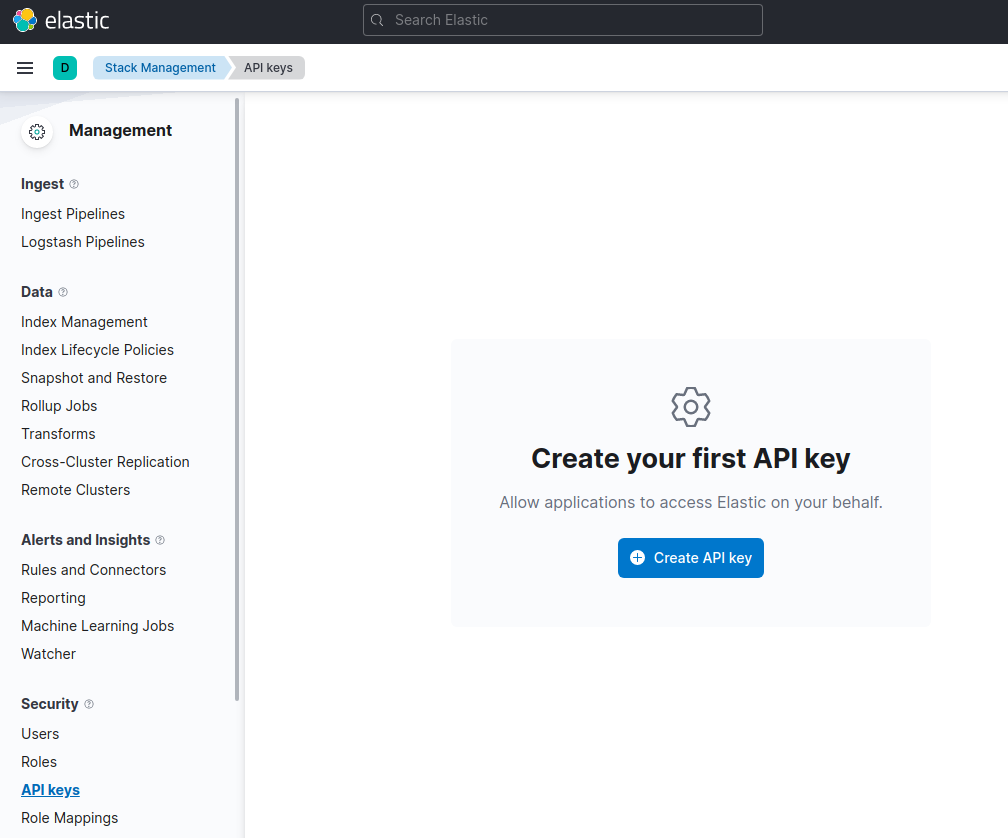1
2
3
4
5
6
7
8
9
10
11
12
13
14
15
16
17
18
19
20
21
22
23
24
25
26
27
28
29
30
31
32
33
34
35
36
37
38
39
40
41
42
43
44
45
46
47
48
49
50
51
52
53
54
55
56
57
58
59
60
61
62
63
64
65
66
67
68
69
70
71
72
73
74
75
76
77
78
79
80
81
82
83
84
85
86
87
88
89
90
91
92
93
94
95
96
97
98
99
100
101
102
103
104
105
106
107
108
109
110
111
112
113
114
115
116
117
118
119
120
121
122
123
124
125
126
127
128
129
130
131
132
133
134
135
136
137
138
139
140
141
142
143
144
145
146
147
148
149
150
151
152
153
154
155
156
157
158
159
160
161
162
163
164
165
166
167
168
169
170
171
172
173
174
175
176
|
---
mapped_pages:
- https://www.elastic.co/guide/en/elasticsearch/client/python-api/current/getting-started-python.html
- https://www.elastic.co/guide/en/serverless/current/elasticsearch-python-client-getting-started.html
---
# Getting started [getting-started-python]
This page guides you through the installation process of the Python client, shows you how to instantiate the client, and how to perform basic Elasticsearch operations with it.
### Requirements [_requirements]
* [Python](https://www.python.org/) 3.9 or newer
* [`pip`](https://pip.pypa.io/en/stable/), installed by default alongside Python
### Installation [_installation]
To install the latest version of the client, run the following command:
```shell
python -m pip install elasticsearch
```
Refer to the [*Installation*](/reference/installation.md) page to learn more.
### Connecting [_connecting]
You can connect to the Elastic Cloud using an API key and the Elasticsearch endpoint.
```py
from elasticsearch import Elasticsearch
client = Elasticsearch(
"https://...", # Elasticsearch endpoint
api_key="api_key",
)
```
Your Elasticsearch endpoint can be found on the **My deployment** page of your deployment:

You can generate an API key on the **Management** page under Security.

For other connection options, refer to the [*Connecting*](/reference/connecting.md) section.
### Operations [_operations]
Time to use Elasticsearch! This section walks you through the basic, and most important, operations of Elasticsearch. For more operations and more advanced examples, refer to the [*Examples*](/reference/examples.md) page.
#### Creating an index [_creating_an_index]
This is how you create the `my_index` index:
```py
client.indices.create(index="my_index")
```
Optionally, you can first define the expected types of your features with a custom mapping.
```py
mappings = {
"properties": {
"foo": {"type": "text"},
"bar": {
"type": "text",
"fields": {
"keyword": {
"type": "keyword",
"ignore_above": 256,
}
},
},
}
}
client.indices.create(index="my_index", mappings=mappings)
```
#### Indexing documents [_indexing_documents]
This indexes a document with the index API:
```py
client.index(
index="my_index",
id="my_document_id",
document={
"foo": "foo",
"bar": "bar",
}
)
```
You can also index multiple documents at once with the bulk helper function:
```py
from elasticsearch import helpers
def generate_docs():
for i in range(10):
yield {
"_index": "my_index",
"foo": f"foo {i}",
"bar": "bar",
}
helpers.bulk(client, generate_docs())
```
These helpers are the recommended way to perform bulk ingestion. While it is also possible to perform bulk ingestion using `client.bulk` directly, the helpers handle retries, ingesting chunk by chunk and more. See the [*Client helpers*](/reference/client-helpers.md) page for more details.
#### Getting documents [_getting_documents]
You can get documents by using the following code:
```py
client.get(index="my_index", id="my_document_id")
```
#### Searching documents [_searching_documents]
This is how you can create a single match query with the Python client:
```py
client.search(index="my_index", query={
"match": {
"foo": "foo"
}
})
```
#### Updating documents [_updating_documents]
This is how you can update a document, for example to add a new field:
```py
client.update(
index="my_index",
id="my_document_id",
doc={
"foo": "bar",
"new_field": "new value",
}
)
```
#### Deleting documents [_deleting_documents]
```py
client.delete(index="my_index", id="my_document_id")
```
#### Deleting an index [_deleting_an_index]
```py
client.indices.delete(index="my_index")
```
## Further reading [_further_reading]
* Use [*Client helpers*](/reference/client-helpers.md) for a more comfortable experience with the APIs.
|